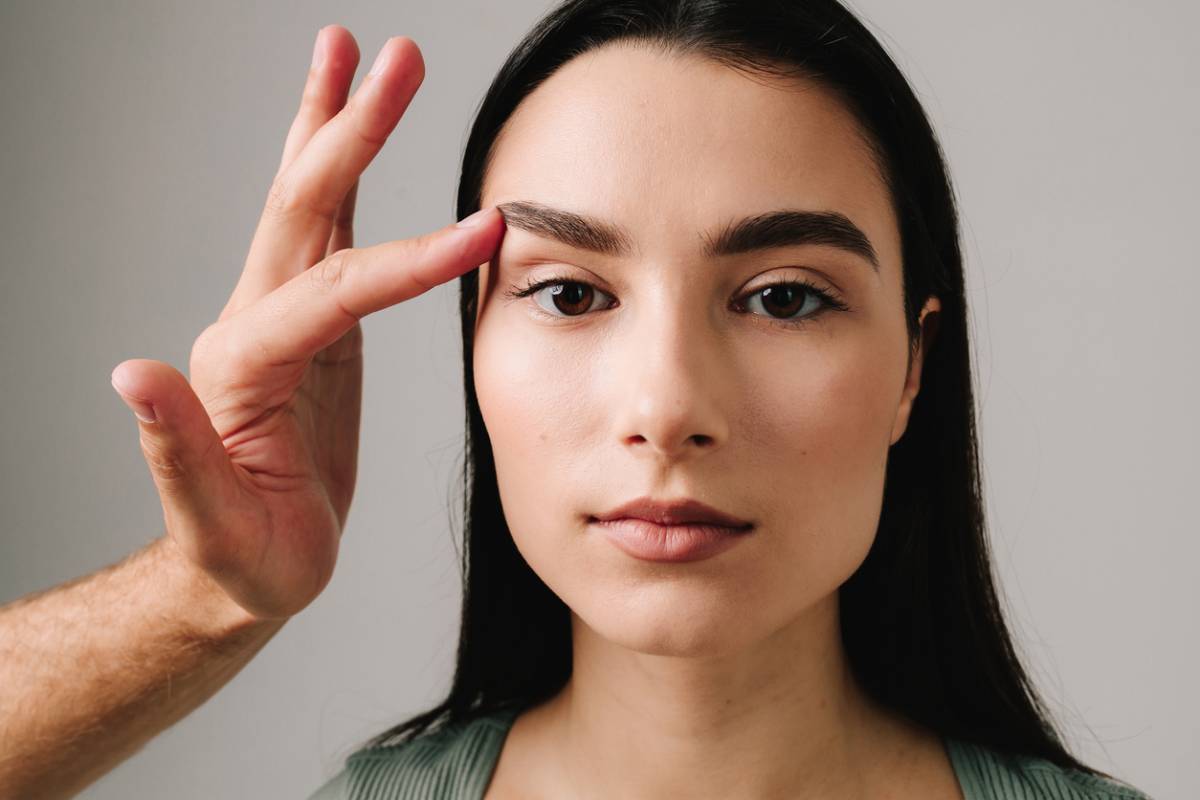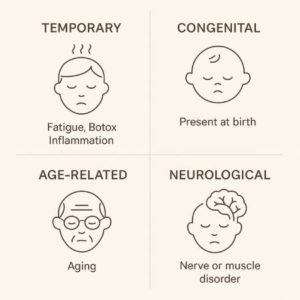Have you ever noticed one of your eyelids drooping more than the other, especially when you are exhausted or looking in the mirror after a long day? This condition, known as ptosis, can be subtle or more noticeable, depending on the underlying cause. For some patients, it is just a cosmetic concern. However, for others, the problem goes beyond that. It can interfere with vision, comfort, and even confidence. It is only natural for sufferers to ask: “Does ptosis ever go away without treatment?” A visit to an oculoplastic surgeon can help you answer this question and ensure that your condition is properly addressed.
Does Ptosis Ever Go Away Without Treatment?
Ptosis can be a cause for concern, whether it is only mild drooping that you are dealing with or a more dramatic change. It can suddenly appear or develop over time. To add, this is something that may affect both adults and children. In some cases, ptosis can occur intermittently, especially when it is associated with fatigue or certain health conditions. The varying nature of the condition can make treating it a confusing and frustrating process. Specifically, it can leave you wondering whether treatment is necessary or if the body will resolve the issue on its own.
There are various causes of ptosis, and the type and cause of ptosis will indicate whether medical help is needed to resolve it.
Let Us Explore the Possibilities Based On Different Causes
Temporary or Reversible Causes
Some cases of ptosis are mild and temporary. They can improve even without intervention.
- Fatigue-Related Ptosis: Long hours of screen time, poor sleep, or eye strain may cause your eyelids to droop temporarily. With adequate rest, this type of ptosis can usually resolve on its own.
- Botox-Related Ptosis: Misplaced Botox injections may also cause ptosis. This type of ptosis usually resolves within 3-6 weeks as the toxin wears off.
- Inflammation or Allergic Reaction: Swelling or irritation around the eyes may cause temporary ptosis. It usually resolves once the underlying condition is addressed and treated.
Congenital Ptosis
Ptosis that is present at birth is usually due to an underdeveloped eyelid muscle. Unfortunately, congenital ptosis does not resolve on its own. It affects the child’s vision, causing them to tilt their head to see clearly. Surgical treatment is often required to address it. Early diagnosis and intervention are crucial to prevent long-term vision problems, such as lazy eye or amblyopia.
Age-Related (Involutional) Ptosis
The tissues and muscles in our eyelids naturally weaken as we age. This is a common type of ptosis that usually worsens over time and does not improve without intervention. It is extremely common in adults who are 50 and older. Eyelid surgery is a safe and effective treatment for this problem, especially when ptosis begins to affect peripheral vision or causes frequent eye fatigue.
Neurological or Muscular Causes
Some types of ptosis are related to more serious conditions involving the nerves or muscles.
- Myasthenia Gravis: This is an autoimmune type of disorder that can cause fluctuating eyelid drooping. The symptoms may improve with rest, but that is only temporary. Medical treatment is usually necessary to manage this disease.
- Third Cranial Nerve Palsy: This can cause severe ptosis along with double vision. Sometimes, cases improve spontaneously; however, surgery may be necessary in other instances.
- Horner’s Syndrome: This often causes mild ptosis, which may be permanent depending on the underlying problem.
Symptoms that Accompany Ptosis
- Uneven eyelid height
- Blurred or obstructed vision
- Increased tearing
- Eye fatigue
- Tilting of the head to see better
- Excessive rubbing of the eyes
- Tiredness or achiness around the eyes
- Children with ptosis may tip their heads back to see
If you think you have ptosis, or if your ptosis develops suddenly, accompanied by double vision, eye pain, or significant vision loss, it is essential to consult a doctor. A comprehensive eye exam, MRI, or CT scan can help rule out serious neurological causes.
Treatment Options
Regular screen breaks to reduce eye fatigue, using a cold compress for inflammation, and practicing good posture and sleeping habits may help manage mild ptosis. However, if medical intervention is necessary, surgery, medications, and special eye drops are options you can discuss with your doctor.
Take the Best Path Forward
While it is true that ptosis may sometimes resolve on its own, it usually remains the same or worsens over time without medical intervention. In some cases, especially if the cause of ptosis is aging, a brow lift procedure may be explored to address underlying structural changes. A medical professional should evaluate persistent eyelid drooping. This will give you peace of mind and point you to the best path forward. Schedule an appointment with us today to address your eyelid concerns.




